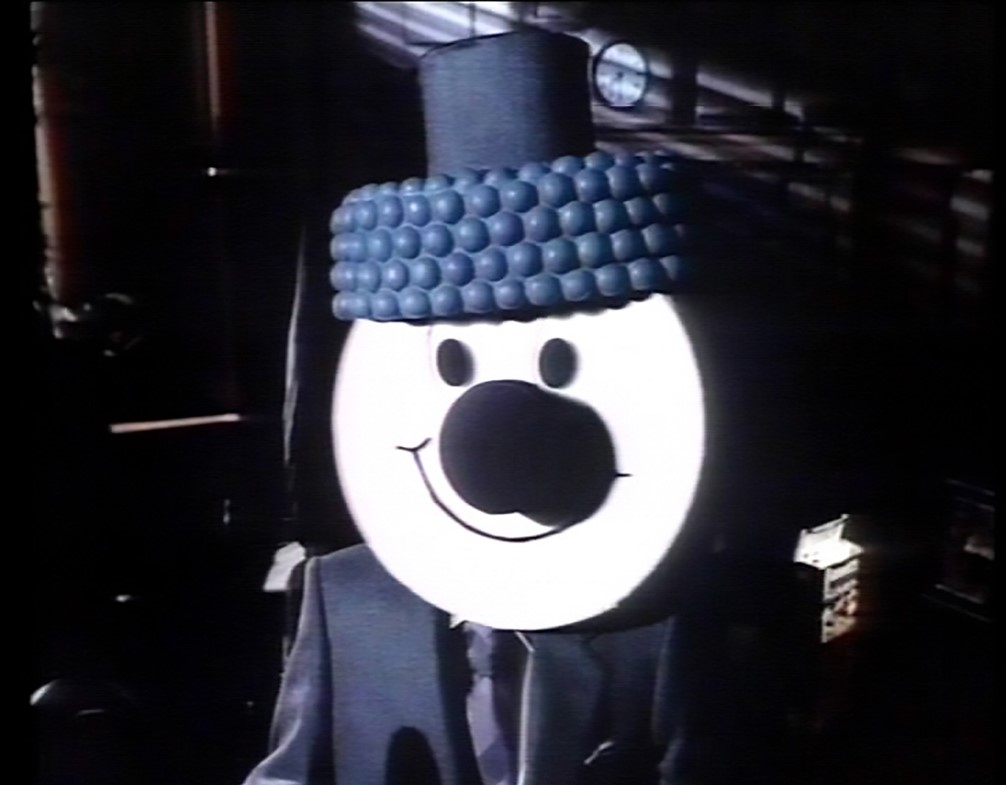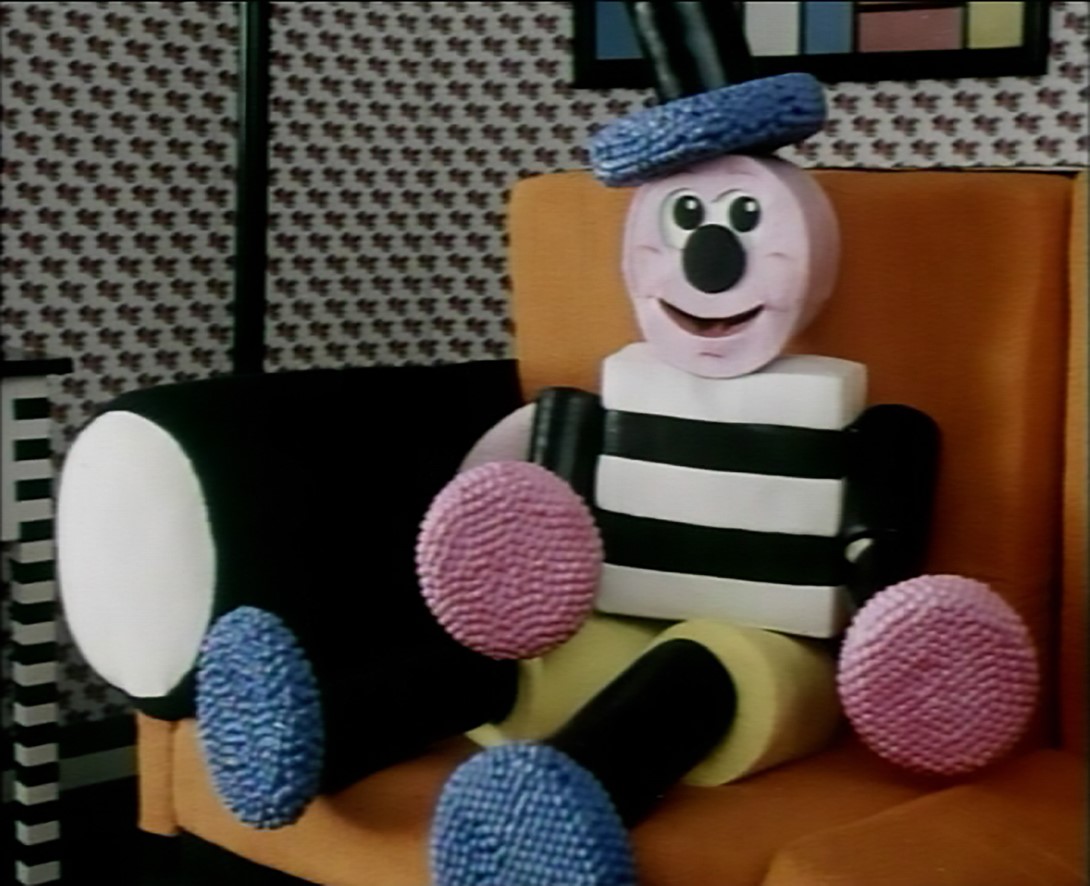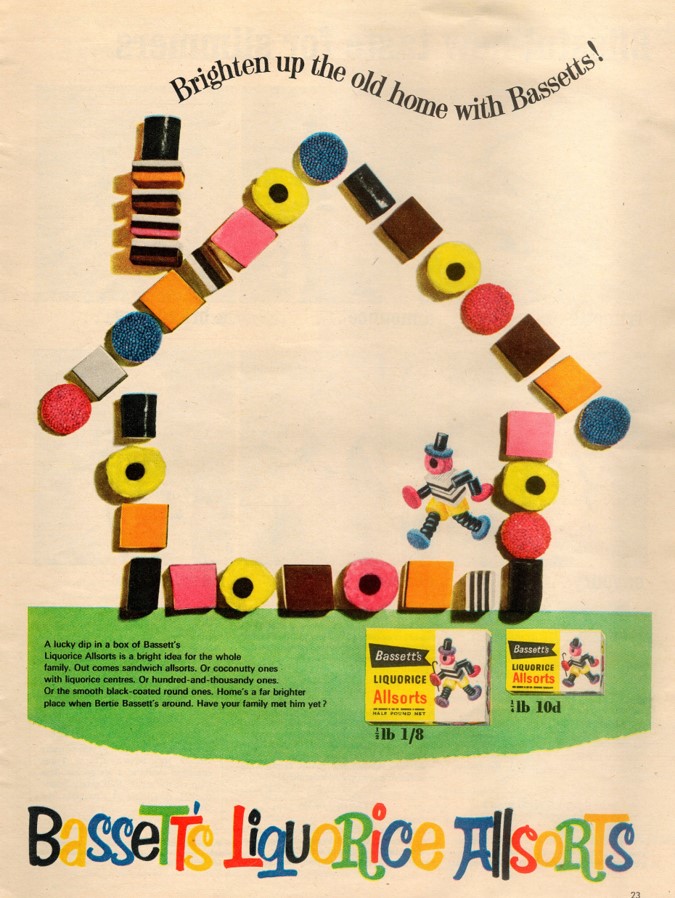Bertie Bassett: 'the sweetest friend of the family'
1959 Bassett's (O&M_S_3a)
In 1842 George Bassett, the son of a Derbyshire farmer, founded a retail confectionery business in Sheffield. He was described in a contemporary trade directory as a ‘wholesale confectioner, lozenge maker and British wine trader’. In 1859 Bassett sold his retail business and moved into sugar confectionery manufacturing. By 1876 the firm’s Portland Street factory was the largest confectionery works in the world (source: Let’s Look Again, A History of Branded Britain). The story goes that Bassett’s famous liquorice assortment was originally created by accident in 1899 when a sample tray of separately packed liquorice lines was dropped and scattered by Bassett’s sales representative Charlie Thompson during a visit to a wholesaler (Mr Walker) in Leicester. The latter ‘realised that in the fascinating array of the mixed sweets – with all their different shapes, colours and sizes – was a new line’ (The Factory Manager, Sep. 1956) and requested a supply of all sorts to be mixed up for him. A new brand had been born.
The company’s iconic mascot Bertie Bassett is generally said to have been created in 1929 at the request of Geo. Bassett & Co who were looking for a suitable trademark with popular appeal. They hired the London based Greenly’s agency for the assignment. At the time ‘Bibendum’, the Michelin tyres mascot (alias ‘The Michelin Man’), was very much in the public eye and Greenly’s managing director suggested that something similar should be devised to represent Bassett’s. The story goes that an agency copywriter deployed liquorice allsorts and pipe cleaners to construct a prototype version of ‘Bertie’. A later Greenly’s promotional leaflet states that he was designed as ‘an unusual and appealing trade figure that could be actively and imaginatively used in every form of publicity’ which certainly proved to be the case.
.jpg)
1956 Bassett’s Liquorice – Millions Love (HAT20/2/2/2/1)
A Greenly’s newsletter from 1954 touched on Bertie’s origin story and celebrated the odyssey of the colourful confectionery character: ‘Most striking feature is the universal acceptance and recognition of the name ‘Bertie’ for the Bassett symbol. ‘Bertie’ came into being more than 20 years ago at an ideas conference, made up out of Liquorice Allsorts spiked together with pins and paper clips. Since then the character has consistently been developed in press, poster advertising and display; in bold, simple phrases and amusing rhymes; in colour and in black and white. The policy of continuity in advertising has been successful over the years because the colourful little figure is always in action, with changing situations and plenty of movement’. A Greenly’s self-advertising proof from April 1949 states that Bertie was created ’14 years ago’ which would imply he actually made his debut sometime in 1934/5, whilst another source indicates that he originated slightly earlier in 1932 – see Confectionery Production Journal article referred to later.
.jpg)
‘See Greenly’s about advertising’, April 1949 (HAT21/26/1/3)
Bertie’s vigorous post war career can be traced via the volumes of press cuttings in the Greenly’s advertising agency collection at HAT. In October 1948 the agency released a new series of Tube (or carriage) cards for Bassett’s Liquorice Allsorts on the London Underground: ‘Colourful drawings feature the familiar figure of “Bertie Bassett” in situations designed with a strong appeal for children’ (World’s Press News, 28 Oct. 1948). In 1950 Bertie was launched on a world tour in rhyme via a sequence of carriage roof cards. In 1953 the appealing mascot embarked on a public-spirited campaign of road safety in adverts demonstrating the Highway Code in simple pictures and phrases in which Bertie ‘as mentor and friend sets the standard of correct behaviour’. Spring 1954 saw the sprightly sweet man get active with a series of tube-cards depicting him exercising energetically (‘knees bend, arms stretch, Indian clubs and the skipping rope’). Readers were invited ‘to have a daily dozen with Bertie’ - a dozen being the number of Allsorts in a tube.
.jpg)
.jpg)
1953-54 Bertie Bassett’s Diary (HAT21_26_2_2)
During the 1954-55 festive season Bertie took to the stage for the pantomime season in ‘Mother Goose’ at the London Palladium (‘Bassett’s Liquorice Allsorts take part in a ballet of “Sweetland’) and Greenly’s provided the theatre management with an escalator bill, showing the Bertie figure in full colour, on which to base their costume designs (source: What Greenlys are Doing internal agency newsletter, Jan. 1955).
Confectionery Production journal saluted 25 years of Bertie Bassett in a 1957 article on brand characters: ‘In my view, “Bertie” is one of the most successful of all the advertising personalities that have brightened up the hoardings and Tube Cards in my life time. Not only is he a cheerful figure in himself, but he is also totally composed of the product. And that, I fancy, makes him unique in confectionery advertising…Appealing to children and adults alike, the little character made an immediate impact. From small beginnings he grew rapidly and, down the years, he has held a special place in the nation’s advertising – always in action, he has been constantly noticed bustling about in changing situations set within a fast moving world…But perhaps the most striking feature of the Bassett story is the universal recognition and acceptance of the name “Bertie” for the symbol. And this has had a curious effect on the advertising presentation: for, although the whole function of advertising has been to sell the sweets…at no time at all have the advertisements shown, or even implied, that Bertie himself was edible. He has, in a manner of speaking, joined the board of directors and become their super-salesman of Liquorice Allsorts. In other words, right from the start he was detached from the essential nature of the product and presented as one best able to promote it’ (Confectionery Production, August 1957). The Bassett’s account transferred from Greenly’s to the Mather & Crowther agency in 1957. A new-style advertising campaign for Liquorice Allsorts was launched which focussed on the ‘Gorgeous’ display of Allsorts and featured a stylish woman in a colourful headscarf made up of the sweets.
.jpg)
1958 Bassett’s Liquorice Allsorts (HAT20/5/2)
Bassett’s Liquorice Allsorts hit an all-time peak in the sellers’ market following World War Two but, apart from a short respite in the early ‘70s, the brand had been in overall decline since then. However, a marketing development programme from 1986-87 by the Ayer Barker agency managed to arrest the decline and actually increased sales by around a quarter. The new theme featured the nightmarish ‘Turning Bertie’ commercial in which a woman was shown frantically trying to get to her man before he ate too many liquorice allsorts and transformed into Bertie Bassett (‘One too many…and you might turn Bertie’).

1987 Bassetts Liquorice Allsorts - Turning Bertie – HAT2/1/34/45
This quirky campaign was designed to capture the distinctly individual character of the Liquorice Allsorts product: ‘Research showed that previous commercials had never captured the spirit of this uniqueness, which seemed to revolve around a bizarre, almost manic eccentricity. This sprang from a combination of the way the sweets looked and tasted, and the way consumers ate them’ (IPA 1988 Advertising Effectiveness Awards case study). The pack copy was also altered slightly to emphasise that Bassett’s were ‘The Original Allsorts’. The award-winning Turning Bertie campaign was credited with boosting sales by a very impressive 40% (Independent Grocer magazine, 14 July 1989). In 1989 Bassett’s was acquired by the Cadbury-Schweppes company and a business press advert from this period showed Bertie enjoying a liquorice cigar to celebrate the new partnership.
%20edit.jpg)
1989 Cadburys Bertie Bassett
Bertie’s appearance has been adapted and modified over the years – for instance, he originally had a more elongated figure and, by the early ‘80s, had rather belatedly acquired a proper face at last which enabled him to talk in television commercials.

1981 Bassetts – Bertie at Home (HAT59/006/011/238)
An episode of Doctor Who from 1988 (The Happiness Patrol) featured a villainous character made up of sweets known as the ‘Kandy Man’ who took great delight in inflicting torture and death with confectionery, including a penchant for drowning victims in his ‘Fondant Surprise’, a deadly solution made of boiling liquid candy. It was noted that the psychopathic android executioner bore a definite physical resemblance to the entirely innocent Bertie Bassett; the offended chairman of the confectionery firm complained to the BBC and, although the latter determined that no copyright infringement had been committed, assurances were provided that the sinister sweetie would not make a comeback. Bertie made a big screen appearance in the 2001 comedy film Mike Bassett: England Manager in a short scene on a newspaper with the headline ‘Bassett’s Allsorts’.
In 2003 a computer-animated version of Bertie was revived by Cadbury Trebor Bassett, following a break from commercials, as the frontman for all Bassett’s sweet lines. The irrepressible Bertie celebrated his official 80th birthday in 2009 by getting married to his sweetheart Betty Bassett at the company’s Sheffield factory. In 2016 the brand, now owned by Mondelez, was merged with fellow confectionery manufacturer Maynard to create Maynards Bassetts. Bertie Bassett, an undisputed icon of British popular culture, still features prominently on Liquorice Allsorts packaging today.

1964 Bassett’s, HAT_32_91_1964_Sep5
If you’d like to discover or re-visit some classic Bertie Bassett ads then head over to our catalogue where 1000s of commercials from the birth of TV advertising in 1955 to the present day, along with historical print ads, can be viewed for free.
Eve Read
Archive Collections Manager
« All News Articles